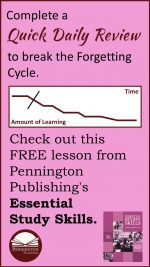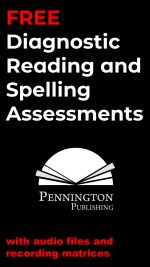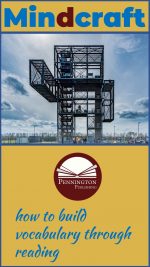How to Eliminate “To Be” Verbs in Writing
Every English teacher has a sure-fire revision tip that makes developing writers dig down deep and revise initial drafts. One of my favorites involves reducing the number of “to be verbs”: is, am, are, was, were, be, being, and been.
At this point, even before I begin to plead my case, I hear the grumbling of the contrarians. One of them mutters a snide, rhetorical question: Didn’t Shakespeare say “To be, or not to be: that is the question:”? He used three “to be” verbs right there! If it’s good enough for Shakespeare, it’s good enough for me. True, but Will used only six more “to be” verbs in Hamlet’s next 34 lines. My goals are to convince teachers to help their students reduce, not eliminate the “to be” verbs, and so write with greater precision and purpose. There. I just used a “to be” verb. Feeling better?
What’s So Wrong with “To Be” Verbs?
- The “to be” verbs: is, am, are, was, were, be, being, been are state of being verbs, which means that they unduly claim a degree of permanence. For example, “I am hungry.” For most Americans, hunger is only a temporary condition.
- The “to be” verbs claim absolute truth and exclude other views. “Classical music is very sophisticated.” Few would agree that all classical compositions are always sophisticated.
- The “to be” verbs are general and lack specificity. A mother may tell her child, “Be good at school today.” The more specific “Don’t talk when the teacher talks today” would probably work better.
- The “to be” verbs are vague. For example, “That school is great.” Clarify the sentence as “That school has wonderful teachers, terrific students, and supportive parents.”
- The “to be” verbs often confuse the reader about the subject of the sentence. For example, “It was nice of you to visit.” Who or what is the “It?”
Adapted from Ken Ward’s E-Prime article at http://www.trans4mind.com/personal_development/GeneralSemantics/KensEPrime.htm
When Can We Use “To Be” Verbs?
It’s not that “to be” verbs are always bad; sometimes writers must use “to be” verbs to communicate exactly what the writer wants to say. In fact, these verb forms can be difficult to replace. When the verb links to the subject (the do-er) of the sentence as a state of being, it performs one of these five functions:
- Exists−Is there any trouble? Yes, I am he (predicate nominative).
- Happens−The meetings are over.
- Locates−He was at the birthday party.
- Identifies−Those children were friendly (predicate adjective).
- Describes−That could be scary (helping verb)! He is being helpful (progressive tense). Those girls have been so mean (perfect tense).
Generally, writers should minimize the use of “to be” verbs in essays. “To be” verbs should appear more frequently in narrative writing, especially in dialogue. Authentic-sounding dialogue mimics our informal speech, which often uses the “to be” verbs.
However, when writers can replace a “to be” verb with a vivid, “show me” verb in any writing genre, it certainly makes sense to do so. With a good “show me” verb, the reader (or listener) can picture the physical or mental action of the verb. The verb engages the interest of the reader and specifically communicates the nature of the action. But, not all non-“to be” verbs are vivid, “show me” verbs. For example, the physical and mental action verbs in this sentence do not use vivid, “show me” verbs: The boy sits down on the bench and thinks what to do next. In contrast, the physical and mental action verbs in this sentence do use vivid, “show me” verbs: The boy slouches down on the bench and studies what to do next.
So, how can we get our students to reduce or eliminate “to be” verbs in their essays to create precision of meaning, specificity, clarity, and just good old sentence variety? How do we get our students to use these vivid “show me” verbs instead? Try these five strategies:
How to Eliminate “To Be” Verbs
- Identify−Students need to memorize the “to be” verbs to avoid using them and to revise those that they have used in essays: is, am, are, was, were, be, being, been. Teach students to self-edit by circling “to be” verbs in the revision stage of writing. Teach students how to problem-solve whether a “to be” verb is necessary or not. Teach students to identify and revise Non-standard English forms of the “to be” verb (Common Core State Standards L.2,3). For example, “They be watching cartoons” or “She been taking her time” You can also identify, explain, and suggest revisions of both “to be” verbs and nonstandard English with one click from my e-Comments app.
- Substitute−Sometimes a good replacement of a “to be” verb just pops into the brain. For example, instead of “That cherry pie is delicious,” substitute the “to be” verb is with tastes as in “That cherry pie tastes delicious.” If a strong, vivid verb does not pop into the brain, HERE is a great list of action verbs, specifically designed for persuasive/argumentative essays, informational/explanatory essays, literary analysis, and narratives (W1.0, 2.0, 3.0 of the Common Core Writing Standards) with useful categories for your students. Thanks to Mary Beth Foster, University of Arizona Strategic Alternative Learning Techniques (SALT) Center for compiling this list. Also, substitute the “there,” “here,” and “it” + “to be” verbs. For example, instead of “There is the cake, and here are the pies for dessert, and it is served by Mom,” replace with “Mom serves the cake and pies for dessert.” Let’s also add on the “this,” “that,” “these,” and “those” + “to be” verbs. Finally, strong linking verbs can replace “to be” verbs. For example, instead of “That was still the best choice,” substitute the “to be” verb was with the linking verb remained as in “That remained the best choice.”
- Convert−Students can start the sentence differently to see if this helps eliminate a “to be” verb. For example, instead of “Charles Schulz was the creator of the Peanuts cartoon strip,” convert the common noun creator to the verb created as in “Charles Schulz created the Peanuts cartoon strip.”
- Change−To eliminate a “to be” verb, students can change the subject of the sentence to another noun or pronoun found in the sentence and rearrange the order of the sentence. For example, instead of “The car was stopped by a police officer,” change the complete subject, the car, to a police officer to write “A police officer stopped the car.” Also, students can add in a different sentence subject to eliminate a “to be” verb. For example, instead of “The books were written in Latin,” add in a different sentence subject, such as “authors” to change the passive voice to the active voice and write “Authors wrote the books in Latin. Lastly, starting the sentence with a different word or part of speech will help eliminate the “to be” verb. For example, instead of “The monster was in the dark tunnel creeping,” rearrange as “Down the dark tunnel crept the monster.”
- Combine−Look at the sentences before and after the one with the “to be” verb to see if combining the sentences will eliminate the “to be” verb. For example, instead of “The child was sad. The sensitive child was feeling that way because of the news story,” combine as “The news story saddened the sensitive child.”
A Teaching Plan to Eliminate the “To Be” Verb
- Post a list of the “to be” verbs and the problem-solving strategies listed above for student reference. Download the three “To Be” Posters at the end of this article. Great tools to teach!
- Why not create a Dead Verbs Cemetery bulletin board? (What a great idea for Halloween!)
- Share the five strategies one at a time, so as not to overwhelm students. Teach, practice, and master only one strategy before moving on to another strategy.
- Use teacher think-alouds to model the “to be” verb revision process.
- Then, turn the revision chore on over to the whole class with one student writing sample. Correct whole class and commend the variety of effective revisions. Compare sentence revisions and discuss which strategies worked and did not work to eliminate the “to be” verbs.
- Next, collect student writing samples from the whole class and have students individually revise their peers’ “to be” verbs. Peer editing focused on one target issue makes sense.
- Next, have students revise their own sentences from their own writing samples, using the five strategies.
After teaching and practicing all five strategies, set the “rule” that from now on only one “to-be” verb is allowed in any paragraph (excluding direct quotes). Use peer editing to help identify the “to-be” verbs and peer tutors to help struggling students.
Teaching the strategies and practicing them in the context of student writing samples will help students recognize and avoid these “writing crutches” in their own writing. The end result? More precise and purposeful student writing with vivid, “show me” verbs.
Check out the quality program materials found in these teacher-created and classroom-tested resources:
*****

Pennington Publishing Grammar Programs
Teaching Grammar, Usage, and Mechanics (Grades 4, 5, 6, 7, 8, and High School) are full-year, traditional, grade-level grammar, usage, and mechanics programs with plenty of remedial practice to help students catch up while they keep up with grade-level standards. Twice-per-week, 30-minute, no prep lessons in print or interactive Google slides with a fun secret agent theme. Simple sentence diagrams, mentor texts, video lessons, sentence dictations. Plenty of practice in the writing context. Includes biweekly tests and a final exam.
Grammar, Usage, and Mechanics Interactive Notebook (Grades 4‒8) is a full-year, no prep interactive notebook without all the mess. Twice-per-week, 30-minute, no prep grammar, usage, and mechanics lessons, formatted in Cornell Notes with cartoon response, writing application, 3D graphic organizers (easy cut and paste foldables), and great resource links. No need to create a teacher INB for student make-up work—it’s done for you! Plus, get remedial worksheets, biweekly tests, and a final exam.
Syntax in Reading and Writing is a function-based, sentence-level syntax program, designed to build reading comprehension and increase writing sophistication. The 18 parts of speech, phrases, and clauses lessons are each leveled from basic (elementary) to advanced (middle and high school) and feature 5 lesson components (10–15 minutes each): 1. Learn It! 2. Identify It! 3. Explain It! (analysis of challenging sentences) 4. Revise It! (kernel sentences, sentence expansion, syntactic manipulation) 5. Create It! (Short writing application with the syntactic focus in different genre).
Get the Diagnostic Grammar, Usage, and Mechanics Assessments, Matrix, and Final Exam FREE Resource:
![]()
Get the Eliminate To Be Verbs Poster and Worksheets FREE Resource:
![]()













